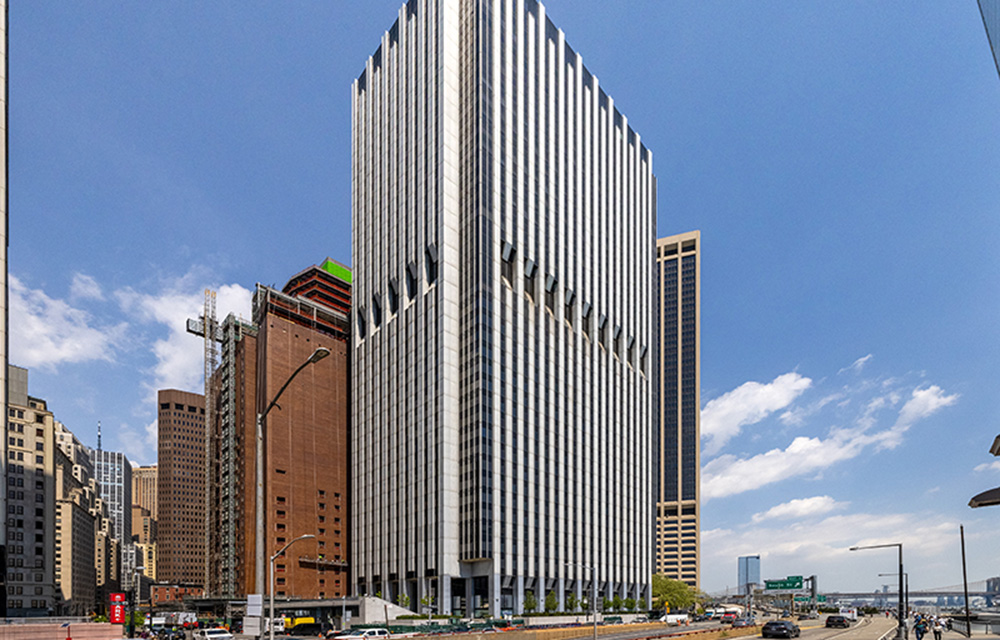News:
Brokerage
Posted: August 25, 2008
Empire Zone program changes still present opportunities for businesses and developers
Over the last decade, NYS has attempted to attract substantial investment and spur job and population growth with various incentive programs. The most important of these programs has been the Empire Zones program which has, since 1986, provided generous tax credits and exemptions to businesses which expand employment and investment in the state. Empire Zones incentives stand out in a crowded national field because they help to offset the state's notable competitive disadvantages, such as comparatively high property taxes, sales taxes, and comparatively high utility costs. In many cases the benefits are refundable to a business in cash. As such, they have proved to be a valuable tool for state and local government to attract and retain businesses.
Developers (and their tenants) have reaped the benefits of the Empire Zones program and other incentives to move projects forward, creating a variety of new financing models to leverage these incentives. However, recent negative news about the state's short and long-term fiscal situation, coupled with widespread public concern voiced over the past two years about the effectiveness and accountability of the state's incentive programs, has led to reexamination of these programs. Empire State Development Corp., the state agency responsible for administrating the Empire Zones program, recently adopted new regulatory hurdles for entry into the program:
* All applicants must pass a higher "cost-benefit analysis" test in order to be admitted into the program. To be certified, a business must demonstrate that the ratio of capital investment and wages to potential tax credits claimed must be at least 20:1; or a business must meet certain "nonquantifiable" criteria. This ratio is based on projections made by the applicant for five years of certification (a business, once admitted, is eligible for most benefits for a ten-year benefit period).
* Nonquantifiable criteria include: whether the business is located in an area which is marked by economic distress, whether the business is part of a group of interdependent businesses referred to as "strategic industry clusters," or whether the business is part of a supply chain; in such cases the cost-benefit ratio for certification is lowered to 5:1. Empire State Development will also examine more closely findings by the local Empire Zones that a business meets these "nonquantifiable" criteria. In urban areas, businesses may find the lower barriers to entry for these projects to be an important incentive in relocating tenants to a typical downtown area.
* Certain businesses known as "regionally significant projects" - manufacturers, agri-business, high-tech, biotech, financial and insurance services, distribution centers, and certain research and development enterprises - are eligible for certification for Empire Zone benefits despite being physically located outside of an Empire Zone. However, these businesses must now demonstrate that a substantial portion of the business' product or service is sold or delivered outside of the state or the metropolitan area, and these businesses must meet certain job growth and/or investment criteria within three years or be decertified from the program. Despite these additional restrictions, regionally significant project designation offers an opportunity for incentives for large-scale projects in more established Empire Zones where most of the zone acreage is already spoken for (it should be noted that Empire Zones are limited to 1,280 acres; acreage allocated to a regionally significant project does not count against this total).
Despite these additional burdens, the Empire Zones program remains generous for those that qualify. Many opportunities continue to exist for businesses to obtain the advantages offered by Empire Zones. New businesses and expansion projects may have the greatest chance of obtaining benefits. The spirit of the Empire Zones program is still based on increasing investment and employment opportunities in urban or blighted areas. Developers should consider maximizing the full range of incentives available in planning a project. Access to the Empire Zones program could make a marginal project economically feasible or enable development of a higher grade project. As always, the guidance of a qualified attorney experienced in state economic development incentives will yield the best results when considering the financing model and structure for a particular project.
Donald Ross, Esq., is an associate at Gilberti Stinziano Heintz & Smith, P.C., Albany, N.Y.
Tags:
Brokerage
MORE FROM Brokerage
Meridian Capital Group arranges 10-year retail lease for Mess at 236 West 10th St.
Manhattan, NY According to Meridian Capital Group, Jordan Langer, Noam Aziz and Carson Shahrabani of the firm’s retail leasing team have arranged a five-year lease at 236 West 10th St. in Greenwich Village

Columns and Thought Leadership

Lasting effects of eminent domain on commercial development - by Sebastian Jablonski
The state has the authority to seize all or part of privately owned commercial real estate for public use by the power of eminent domain. Although the state is constitutionally required to provide just compensation to the property owner, it frequently fails to account

AI comes to public relations, but be cautious, experts say - by Harry Zlokower
Last month Bisnow scheduled the New York AI & Technology cocktail event on commercial real estate, moderated by Tal Kerret, president, Silverstein Properties, and including tech officers from Rudin Management, Silverstein Properties, structural engineering company Thornton Tomasetti and the founder of Overlay Capital Build,

Strategic pause - by Shallini Mehra and Chirag Doshi
Many investors are in a period of strategic pause as New York City’s mayoral race approaches. A major inflection point came with the Democratic primary victory of Zohran Mamdani, a staunch tenant advocate, with a progressive housing platform which supports rent freezes for rent

Behind the post: Why reels, stories, and shorts work for CRE (and how to use them) - by Kimberly Zar Bloorian
Let’s be real: if you’re still only posting photos of properties, you’re missing out. Reels, Stories, and Shorts are where attention lives, and in commercial real estate, attention is currency.








.jpg)

.gif)